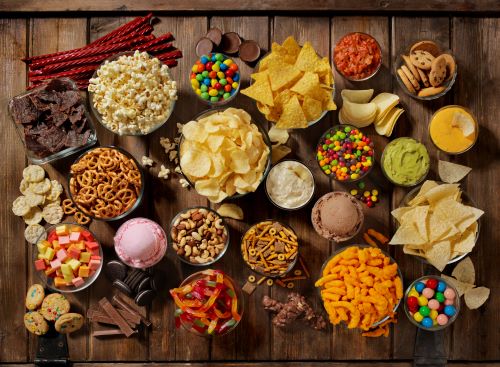Consumers Balance Nutrition, Indulgence in Snack Behaviors: Report

Opportunities for innovation in the snacking category remain wide open as consumers continue to nosh throughout the day and as their definition of snacking continues to evolve, according to a new report from The Hartman Group.
Overall, consumers are becoming more intentional in their snacking, choosing specific snacks at specific times for specific reasons, according to the “Future of Snacking 2024: Balancing Intent with Indulgence” report. Consumers are also focusing more on nutritious snacks, but still leaving plenty of room for indulgent treats.
Snacking accounted for 50 percent of all eating occasions in 2023, inching up from 47 percent in 2019, the report found.
“We are absolutely a nation of snackers,” said Melissa Abbott, vice president of syndicated studies at The Hartman Group, in a webinar discussing the report.
The study surveyed more than 2,000 adults across the U.S. and also included interviews and ethnographic research in which consumers kept track of their snacking behaviors.
Consumers overall remain conflicted about snacking, the report found, as they try to balance their desire to eat a healthier diet and allow themselves to enjoy the pleasures of eating.
“There's a lot of emotion connected to our snacking,” said Abbott.
Consumers are seeking “idealized” snacking options that balance their nutritional preferences with their desire for indulgence, without making them feel guilty about their choices, she said.
The desire for healthy snacks shows in the data, as 75 percent of consumers said they consume fruits and vegetables as snacks at least weekly, and 67 percent said they eat healthy snacks that have less sugar or reduced sodium, for example. Consumers also said they frequently eat snacks that make them feel full longer, snacks that provide energy, snacks that are high in protein, organic snacks, and premium-quality snacks.
The report also found that younger consumers in particular are more likely than older consumers to replace traditional meals, especially breakfast and lunch, by snacking throughout the day instead. Three-fourths of consumers—76 percent—said they have replaced a meal with snacks, including 39 percent who said they do so at least once per week.
In addition, more snacks are being incorporated into meals, with the growth of grazing boards that might contain olives, nuts, and cheese, for example.
Convenience also plays an important role in consumers’ snacking decisions, the report found, although consumers are willing to spend more time on snack preparation for social snacking occasions, in which snacks are shared with others.
The report also broke down the motivations for snacking into four main categories: nourishment, optimization (such as for a quick energy boost, rejuvenation, or mental focus), pleasure, and distraction (such as to alleviate boredom or stress, or out of habit). Often these motivations overlap, with the combination of nourishment and pleasure the most common combination of motivating factors.
Consumers are opting for snacks “to suit a whole myriad of needs,” said Abbott. “So, there is without a doubt a lot of white space opportunity that continues to exist within the snacking space.”
When asked how they discovered new snacks, 57 percent said they do so at physical food stores, and 51 percent said they discover new snacks through friends and family. About one in five—21 percent—said they discover new snack foods through sampling, demonstrations, and pop-ups.
Gen Z, millennials, and households with children under 18 over-indexed for snack discovery through digital platforms, including online ads (other than social media), YouTube, Instagram, and Facebook, which were each cited by about a fifth of consumers overall. TikTok was cited as a platform for snack discovery by 15 of consumers overall.
